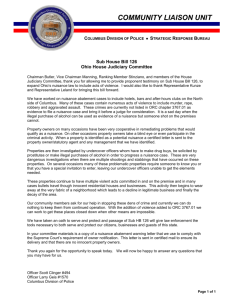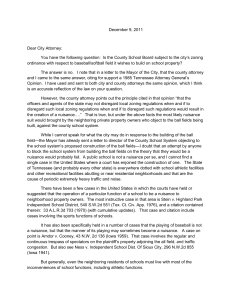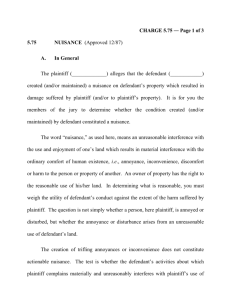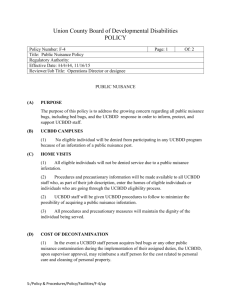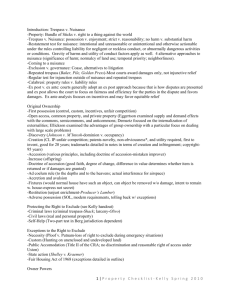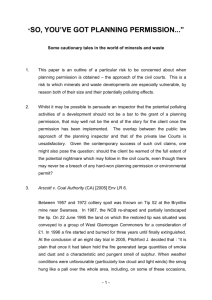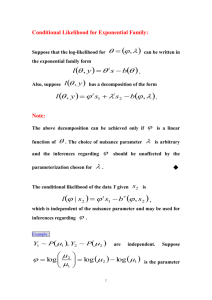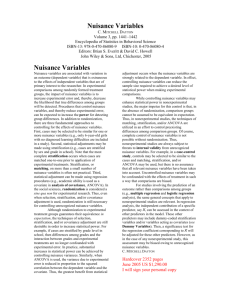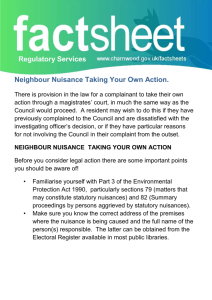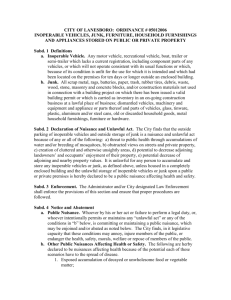week13
advertisement
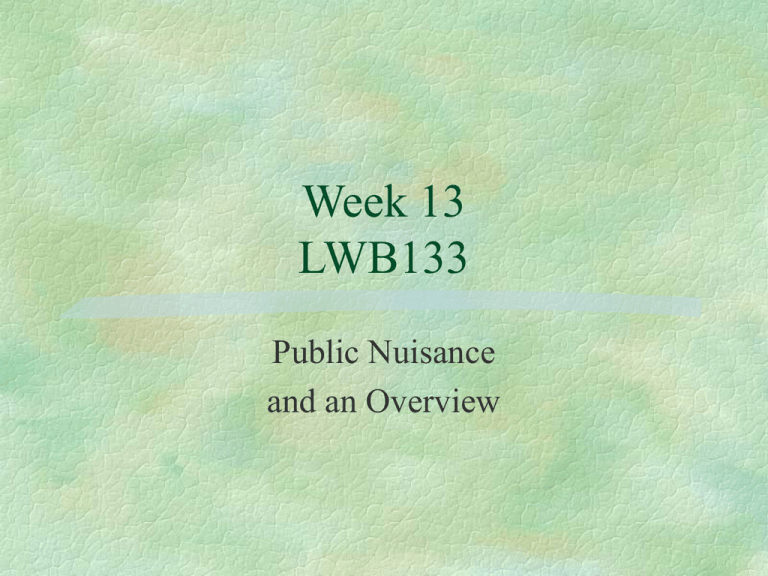
Week 13 LWB133 Public Nuisance and an Overview Private Nuisance Indirect interferences recognised interest in land protection of legally recognised right damage physical damage to land substantial and unreasonable interference with the use and enjoyment of land Public vs Private Public nuisance is a crime s230 Criminal Code action in tort by an individual upon proof of particular damage no interest in land required possible to have actions in both private and public nuisance Halsey v Esso Petroleum Public Nuisance Definition: an unlawful act or omission to discharge a legal duty which act or omission endangers the lives, safety, health, property or comfort of the public or by which the public are obstructed in the exercise or enjoyment of any right common to all members of the public. Attorney-General v PYA Quarries [1957] 2 QB 169 Examples oil overflowing from a service station onto a public footpath oil spillage affecting a river or foreshore causing crowds or vehicles to block access to roads or shops: Lyons, Sons & Co v Gulliver [1914] 1 Ch 361 the way a game is played, for example, golf – making the public right of access past the golf course dangerous: Castle v St Augustine’s Links Ltd (1922) 38 TLR 615 Standing to Sue Action brought in the name of the AttorneyGeneral “[A] public nuisance is a nuisance which is so widespread in its range or so indiscriminate in its effect that it would not be reasonable to expect one person to take proceedings on his own to put a stop to it, but that it should be taken on the responsibility of the community at large.” – Attorney-General v PYA Quarries [1957] 2 QB 169 at 191 An Individual’s Standing to Sue Individual suffered particular damage over and above the rest of the public the interference must be substantial and unreasonable causation must be established Particular Damage Personal injury property damage depreciation in the value of property pure economic loss delay and inconvenience Ball v Consolidated Rutile Plaintiff must establish that: defendant responsible for the slippage slippage interfered with a public right the interference constituted a public nuisance plaintiffs suffered special damage Defendant’s Liability Damage must not be too remote Wagonmound No 2: test of foreseeability Acts of third party if defendant knew or ought to have known about the nuisance Crowds act of defendant did not take reasonable means to avoid the nuisance if is part of business, defendant liable • Silservice Pty Ltd v Supreme Bread Pty Ltd Public Authorities Liability only in cases of misfeasance NOT non-feasance Unreasonable Rule of “give and take” Bamford v Turnley objective test weigh the utility of the defendant’s activities against the inconvenience to others against whether the nuisance could have been avoided Defences Statutory Authority Allen v Gulf Oil Contributory Negligence McMeekin v Maryborough Council Act of Third Party Cartwright v McLean & Long Pty Ltd Remedies Injunction Damages Abatement Answering a Question in Public Nuisance Identify all possible nuisances. State the definition of public nuisance. Apply the definition to the facts. Consider who has standing to sue. Consider any possible defences. Advise on remedies. Public nuisance is a crime, s230 Criminal Code
